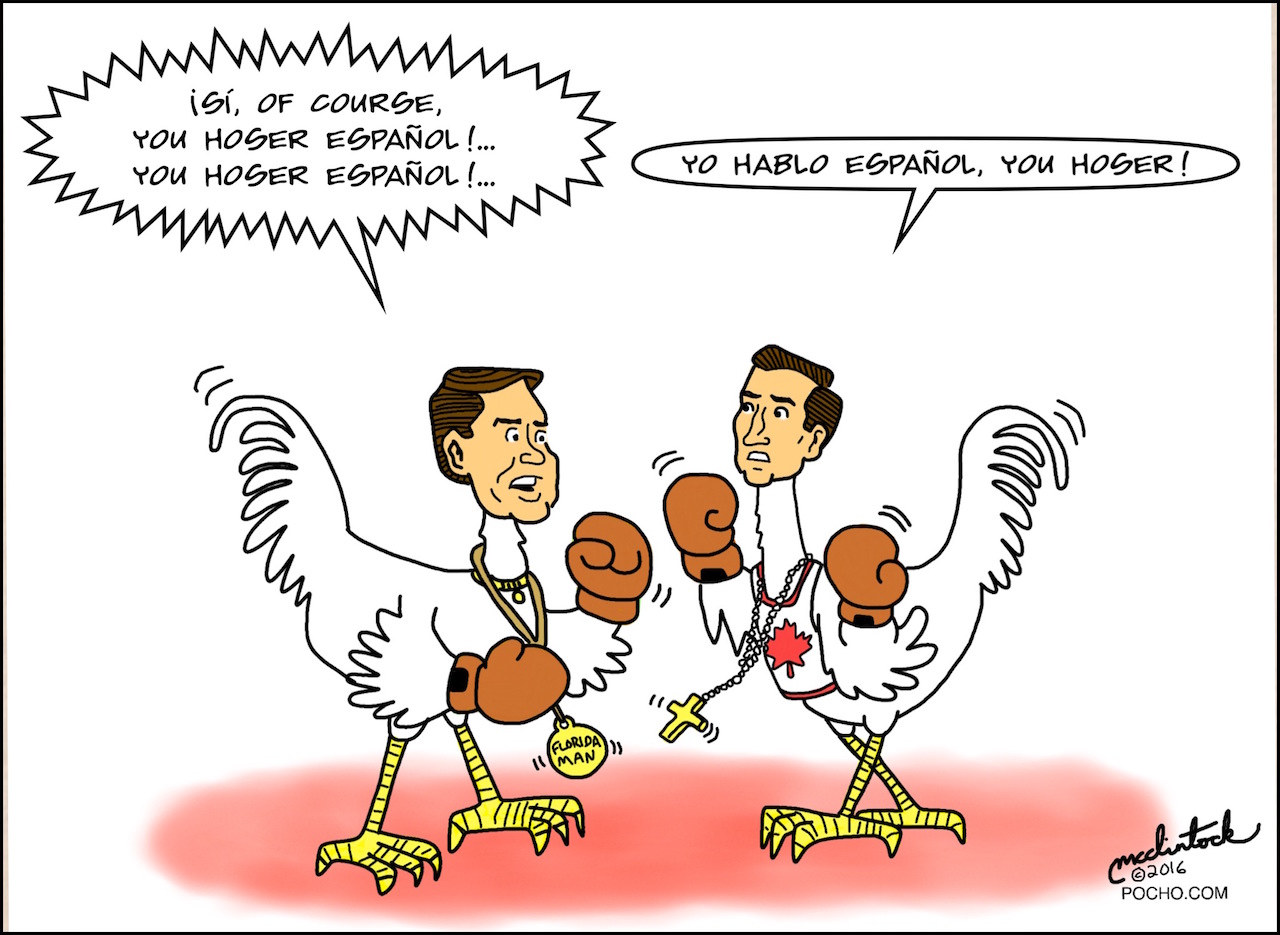language
NPR Audio: Talking about Spanglish at this college – chingon or nah?
 Some people speak English, others speak Spanish. But we speak Spanglish. How about you?
Some people speak English, others speak Spanish. But we speak Spanglish. How about you?
Yes, they say “Latinx” in this news feature. Don’t @ me.
Mas…NPR Audio: Talking about Spanglish at this college – chingon or nah?
Just for White People! Mind Your Own F**king Business (NSFW video)
Hello, White People! Did the customer in front of you just speak a language that makes you irrationally angry? Ask your doctor if Mind Your Own F**king Business is right for you. [NSFW language. Video by Cat Adell and friends.]
Happy Rosh HaShana from the Jews of Tijuana! Happy 5778! (video)
 Mexico, like the United Estates, is a “nation of immigrants.”
Mexico, like the United Estates, is a “nation of immigrants.”
In the 1900s, Tijuana welcomed Jewish refugees fleeing wars, hate, and poverty in Europe, Asia and the Mideast.
Tijuana Jews, the story of the extended Artenstein family, has become a POCHO Rosh HaShana (New Year) tradition ever since we noticed rosh-ha-shana rhymed with Tijuana in 2012.
Mas…Happy Rosh HaShana from the Jews of Tijuana! Happy 5778! (video)
What language is that? Funny, you don’t look Nahuatl (video)
Languages around the world share similar characteristics, but how do we know if they are related?
DREAMer from Georgia, back in DF, tries to fit in (NPR audio)
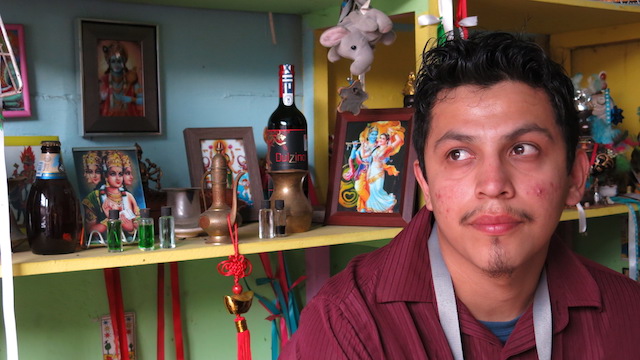
Yovany Diaz was brought to the U.S. without papers when he was only seven, and he grew up in Georgia, speaking English. When his mom’s health issues required him to move “back” to Mexico City, this all-American ice hockey loving pocho found himself in a strange new world, even though it was “home.” James Frederick of NPR’s Latino USA has the story.
Happy Rosh HaShana from the Jews of Tijuana! Happy 5777! (video)
 Mexico, like the United Estates, is a “nation of immigrants.”
Mexico, like the United Estates, is a “nation of immigrants.”
In the 1900s, Tijuana welcomed Jewish refugees fleeing wars, hate and poverty in Europe, Asia and the Mideast.
Tijuana Jews, the story of the extended Artenstein family, has become a POCHO Rosh HaShana (New Year) tradition ever since we noticed rosh-ha-shana rhymed with Tijuana in 2012.
Mas…Happy Rosh HaShana from the Jews of Tijuana! Happy 5777! (video)
Let’s get one thing straight: No human being is ‘illegal’
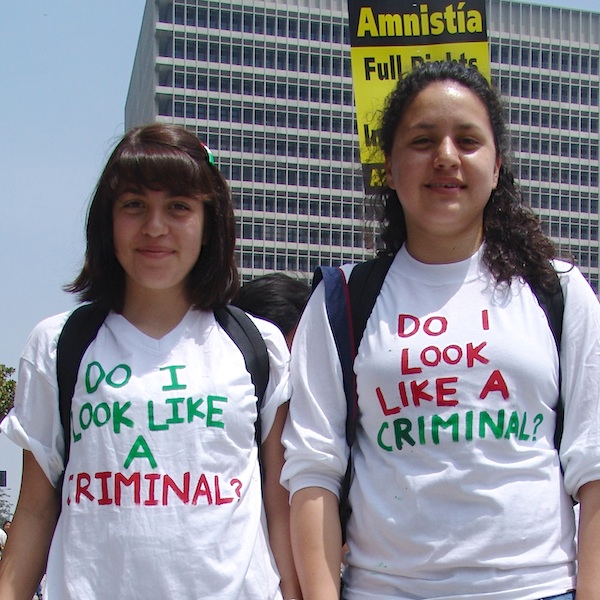 “Could the president grant deferred removal to every unlawfully present alien in the United States right now?”
“Could the president grant deferred removal to every unlawfully present alien in the United States right now?”
That’s how Supreme Court Chief Justice John Roberts referred to individuals lacking the proper documents to be in the country during a recent hearing on DAPA (Deferred Action for parents of Americans and Lawful Permanent Residents).
“Alien” is the legal term to describe these individuals, but Justice Sonia Sotomayor also referred to them as “undocumented immigrants.” She objected to the phrase “illegal immigrants”, which she considers too harsh. Justice Sonia Sotomayor even explained that “illegal immigrants” associates them with “drug addicts, thieves, and murderers.”
Mas…Let’s get one thing straight: No human being is ‘illegal’
Native American population almost back to pre-Columbian levels
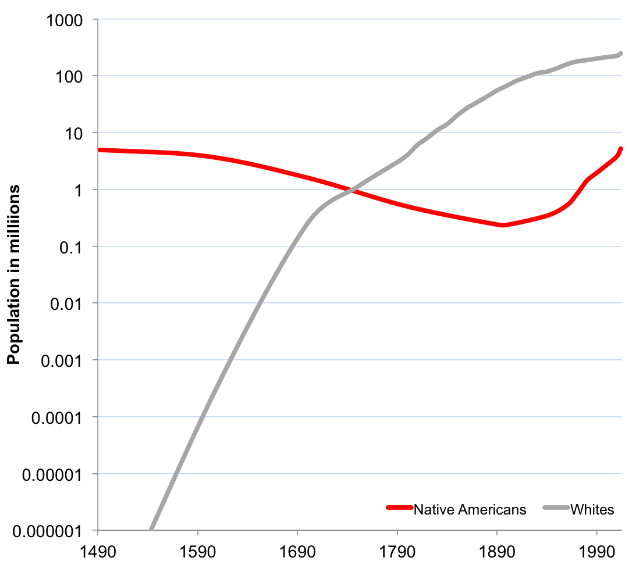 Samuel W. Bennett’s GET DATA website features charts/graphs and infographics about current events, sports, news, culture, and history. We thought this log-scale graph of the native (in red, of course) and white population in the U.S. was fascinating, sad, and maybe, just maybe, encouraging.
Samuel W. Bennett’s GET DATA website features charts/graphs and infographics about current events, sports, news, culture, and history. We thought this log-scale graph of the native (in red, of course) and white population in the U.S. was fascinating, sad, and maybe, just maybe, encouraging.
His description:
After disease and war decimated the Native American population from an estimated pre-Columbian 5 million to a low of a few hundred thousand in the late 1800s, the American Native American population has recently approached the pre-Columbian population. The…figure shows that the population of American Native Americans from 1492 to present.
His chart that ranks Tolerance, Racism and Xenophobia in the United States shows we’re lots more tolerant than some other countries, but still have big-ass problems with gays, immigrants and “foreign languages,” not that this is news to us.
Mas…Native American population almost back to pre-Columbian levels
Can you spot the Latino in this photograph?
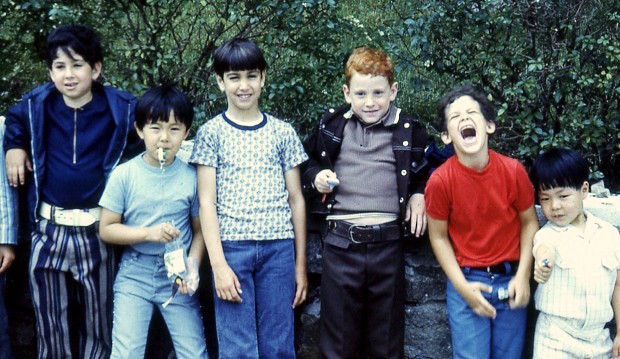 I’m pretty sure I was the only redhead at the NYU Latino Law Students Association Gala in the spring of 1990. The food was delicious, my date looked stunning, and I was glad I had jumped on the opportunity when I received the LALSA invitation.
I’m pretty sure I was the only redhead at the NYU Latino Law Students Association Gala in the spring of 1990. The food was delicious, my date looked stunning, and I was glad I had jumped on the opportunity when I received the LALSA invitation.
My journey to that moment began 25 years earlier. I was born in Santiago, Chile in 1965: a third generation Chilean on my father’s side (whose people came from Odessa), and first generation on my mother’s side, who arrived when she was 12 from Hungary.
We left Chile in 1970 after the election of socialist president Salvador Allende. For Mom, socialism was close enough to the Soviet regime she’d fled in Hungary.
I started kindergarten at P.S. 81 in the Bronx. With a curly mop of flaming red hair and speaking only Spanish, I immediately embarked on a lifelong career of not fitting in. I learned English fast, but I still felt like an outsider. I got into X-Men comics because I identified with the mutants.
My name is Vero and I’m a Mexican-American (video)
Vero Higareda made this video for a class she’s taking at University of Texas Rio Grande Valley. Like so many others, she has been told that she doesn’t look Mexican.
What Being Hispanic Means to Me: A Short Story (video)
Live from her bedroom, California-native high school senior Allison Reyes explains the heartaches and joys of Being Hispanic. SPOILER: If she had to do it all over again, she wouldn’t change a thing.
This L.A. pocha wishes she could speak better Spanish (video)
Los Angeles pocha Natalie Munguia didn’t learn Spanish when she was growing up, and now she feels left out, as she explains in this video for Sociology 244 at Whittier College. FYI, here’s the course description:
Mas…This L.A. pocha wishes she could speak better Spanish (video)
Latino Heritage Month Pochismo Profile: Xochitl Cahuenga-Alvarado
 California artist Xochitl Cahuenga-Alvarado (born in 1988 in Fresno) creates mixed media artworks and performances.
California artist Xochitl Cahuenga-Alvarado (born in 1988 in Fresno) creates mixed media artworks and performances.
By investigating language on a meta-level, Cahuenga-Alvarado tries to grasp language.
Transformed into art, language becomes an ornament. At that moment, lots of ambiguities and indistinctnesses, which are inherent to the phenomenon, come to the surface. Ooooh, shiny!
Her mixed media artworks are an investigation into representations of (seemingly) concrete ages and situations as well as depictions and ideas of the Latin@ that can only be realized in mixed media art.
Mas…Latino Heritage Month Pochismo Profile: Xochitl Cahuenga-Alvarado
Happy Rosh HaShanah from the Jews of Tijuana! Happy 5776! (video)
 Mexico, like the United Estates, is a “nation of immigrants.”
Mexico, like the United Estates, is a “nation of immigrants.”
In the 1900s, Tijuana welcomed Jewish refugees fleeing wars, hate and poverty in Europe, Asia and the Mideast.
Tijuana Jews, the story of the extended Artenstein family, has become a POCHO Rosh HaShanah (New Year) tradition ever since we noticed rosh-ha-shanah rhymes with Tijuana.
The Jewish year 5776 begins at sundown Sunday, September 13. We wish all who celebrate a happy, healthy, peaceful, loving, prosperous, and sweet New Year. In Ladino — the hybrid Spanish-Hebrew language Jews spoke in Andaluz before the Inquisition — that’s ANYADA BUENA I DULSE!
Mas…Happy Rosh HaShanah from the Jews of Tijuana! Happy 5776! (video)
First-generation Felipa was born ‘North of the Border’ (#TBT 1970 video)
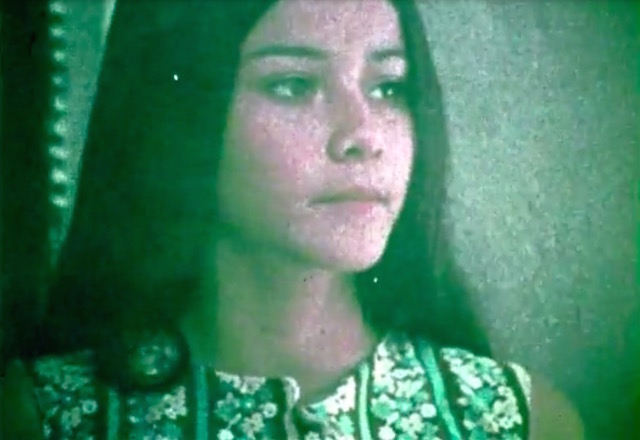 First-generation Texas-born Filipa wants to be teacher, and she gets some early experience when she helps her uncle learn English so he can obtain a driver’s license for a new job. The documentary short Felipa: North of the Border is from 1970 and aired on CBS.
First-generation Texas-born Filipa wants to be teacher, and she gets some early experience when she helps her uncle learn English so he can obtain a driver’s license for a new job. The documentary short Felipa: North of the Border is from 1970 and aired on CBS.
Mas…First-generation Felipa was born ‘North of the Border’ (#TBT 1970 video)
Latino? Hispanic? Spanish? What’s the difference? (videos)
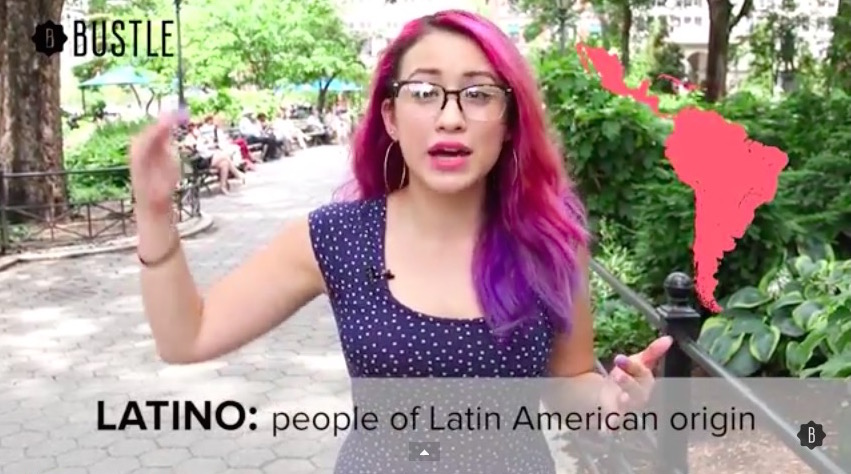 Hispanic, Latino and Spanish are often used interchangeably in describing ethnicity. But what’s the right terminology? Feminist, vlogger and “critical thinker” Kat Lazo sets people straight. Nice Venn diagram, too.
Hispanic, Latino and Spanish are often used interchangeably in describing ethnicity. But what’s the right terminology? Feminist, vlogger and “critical thinker” Kat Lazo sets people straight. Nice Venn diagram, too.
Mas…Latino? Hispanic? Spanish? What’s the difference? (videos)
English is my third language; I grew up speaking Spanish and Caló
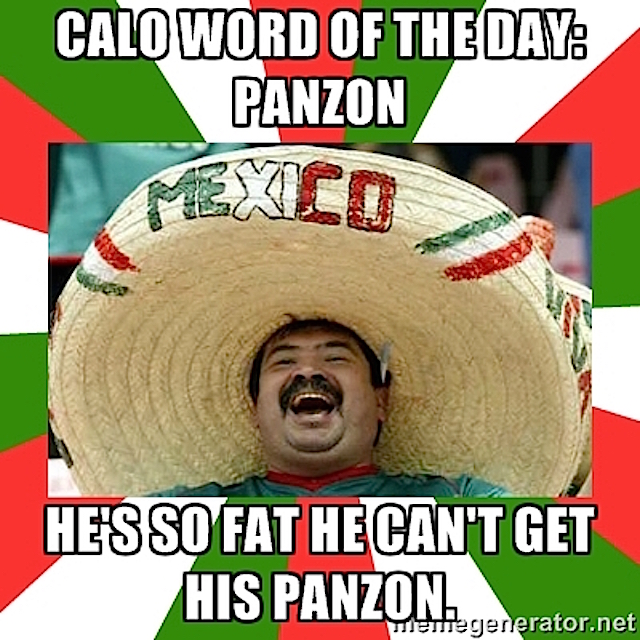 I was born and raised in El Paso in an area known as The Second Ward because of its political designation in city government.
I was born and raised in El Paso in an area known as The Second Ward because of its political designation in city government.
In the greater community, it was most popularly called South El Paso. However, the approximately 25,000 mostly Chicano people who lived there referred to the neighborhood as El Segundo Barrio. It was a barrio that was like an island sandwiched between the Rio Grande Mexican border and downtown El Paso.
In this isolated area, about a third of the families were of second or third generation Mexican descent like ours. Another third was made up of mostly migrant newer arrivals and the rest were in transition. However, it was the Spanish language that served to unite the whole community. Although Spanish was prevalent, lots of exposure to English came through, school, work, movies, radio, music and TV, which was then in its infancy.
Although I love that I am bilingual, I was recently reminded that I am, in fact, trilingual. You see, this third language was unique to our Segundo Barrio culture because it originated there. It started as the jargon for the criminal element in our midst. These outlaws were widely know as “pachucos” because of the Los Angeles bent to their style of clothes. Most of us called them Tirilis and for all intents, they were the precursors of today’s gang members.
Mas…English is my third language; I grew up speaking Spanish and Caló
Latino USA: Favorite Spanglish words and Ilan Stavans (audio)
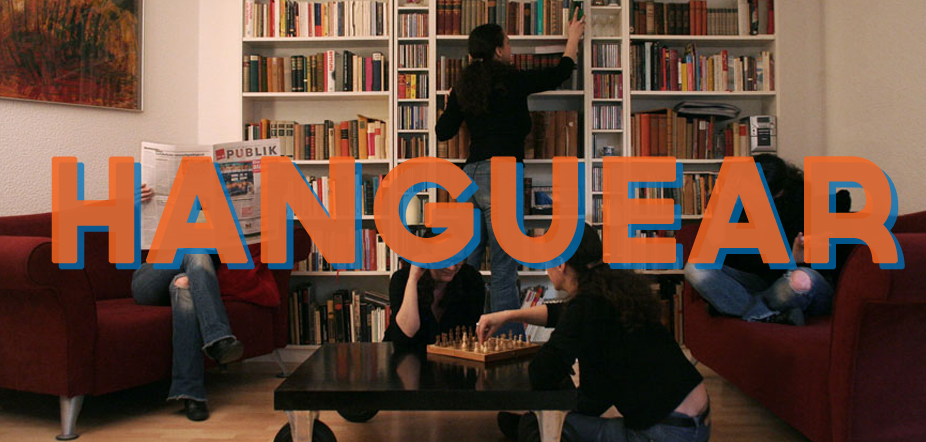 Like puro pochos, the peeps at Latino USA talk Spanglish. In this episode they talk about their favorite Spanglish vocabulary words and also check in with expert and POCHO amigo Professor Ilan Stavans, who literally wrote the book on Spanglish.
Like puro pochos, the peeps at Latino USA talk Spanglish. In this episode they talk about their favorite Spanglish vocabulary words and also check in with expert and POCHO amigo Professor Ilan Stavans, who literally wrote the book on Spanglish.
Mas…Latino USA: Favorite Spanglish words and Ilan Stavans (audio)
The Easter Story: Why advertising to Hispanics sucks balls* [Updated]
By BERNADETTE RIVERO
Technically, the word I should have used above, in the headline, is “Manipulates.” As in, “Safely Manipulate Your Balls When You Celebrate!”
That’s what the Federal Drug Administration advises this season, anyway. (Screen capture, above.)
But I’m a writer who has spent a lifetime in both advertising and journalism, and I know the value of good clickbait when I have it in my hands.
Er… Line of sight. Sorry, I’m distracted by the FDA advising me to fondle one’s nether regions for Easter.
Mas…The Easter Story: Why advertising to Hispanics sucks balls* [Updated]
Spanglish is no Juan E. Come Lately to California (audio)
 When Los Angeles was a still a little pueblo in the northern part of Mexico known as Alta California, Spanglish was born.
When Los Angeles was a still a little pueblo in the northern part of Mexico known as Alta California, Spanglish was born.
Public Radio International’s Global Nation explains:
…living in the a rancho just north of the pueblo was a young Scottish adventurer named Hugh Reid. In the 1830s he left the old world for the new — Mexico. And in his adopted home he was rechristened with an additional Spanish name, Perfecto Hugo Reid. Reid would eventually settle down on a ranch in southern California near the San Gabriel mission in what’s now Arcadia, a suburb of Los Angeles, where he married a local woman, Doña Victoria.
Robert Train has been obsessed with Hugo Reid’s backstory for the last few years. Train is a professor of Spanish at Sonoma State University. We met recently at the Huntington Library archives in Pasadena, to read Reid’s extremely yellowed letters.
Mas…Spanglish is no Juan E. Come Lately to California (audio)
BBC Video: What does it mean to be Mexican-American?
The BBC sent a reporter to the Southwest to find out what it means to be a Mexican-American. The answer? It’s complicated.
Accusations, controversy doom first Spanglish grammar conference
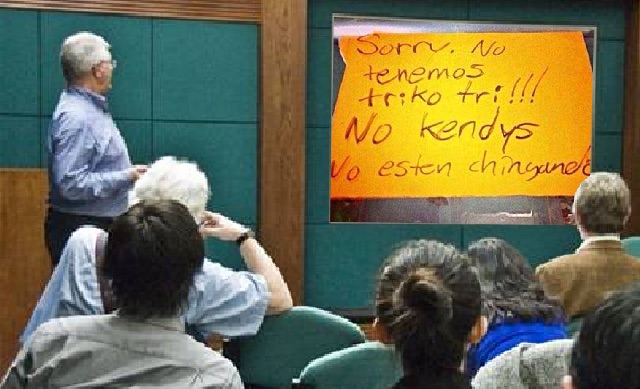
(PNS reporting from RANCHO CUCAMONGA, CA) Factional fighting among Spanglish speakers, academics, and Raza activists doomed the first Spanglish grammar conference, held here Sunday.
“The idea was to create some foundational principles and ground rules for our people’s language,” co-organizer Lourdes Cervantes-Borges of the Professional Organization of Chican@s Oppressed by Society (POCHOS) told PNS. “We wished merely to memorialize those rules in a book of proper Spanglish Style, a Estronque y Blanco if you will, but then these know-nada nacos had to get involved.”
“No manches, son puras pendejadas! I ain’t down with all of that academic bullshit,” countered East Los delegate-at-large Oscar “Mocoso” Chavez. “Nuestra lengua is from the streets, and I ain’t talking ’bout that chingon taco troka on the corner of Beverly Boulevard.”
Mas…Accusations, controversy doom first Spanglish grammar conference
Alfonso Ochoca: Don’t hate me because I don’t speak Spanish (video)
Ever have an awkward moment when you have to pretend to be an Anglo at the taqueria because you don’t speak Spanish? Alfonso “White Boy Mexican” Ochoa reports.








